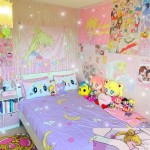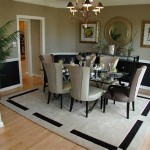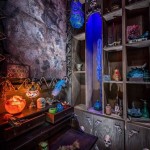Art Room Decorating Ideas: Creating an Inspiring and Functional Workspace
A well-designed art room is essential for fostering creativity and productivity. The environment directly influences the artistic process, providing inspiration and facilitating workflow. Proper organization, thoughtful color choices, and effective lighting are all key components of a successful art room. This article will explore several art room decorating ideas, offering guidance on creating a functional and inspiring workspace.
Maximize Storage Solutions
One of the most critical aspects of an effective art room is efficient storage. Artists accumulate a vast array of materials, from paints and brushes to canvases and sculpting tools. Without organized storage, the space can quickly become cluttered and chaotic, hindering the creative process. Implement a multi-faceted storage strategy to keep the room organized and accessible.
Consider utilizing a combination of cabinets, drawers, shelving units, and storage containers. Cabinets and drawers are ideal for storing smaller items like paints, pencils, and erasers, providing a concealed and tidy appearance. Shelving units, both open and closed, can accommodate larger items such as canvases, sketchbooks, and reference materials. Transparent or labeled storage containers allow for easy identification of contents and promote efficient organization. Wall-mounted storage options, such as pegboards or floating shelves, can maximize vertical space, particularly beneficial in smaller rooms. Investing in a rolling cart offers portable storage, which is helpful for moving supplies between workstations or into another room.
Optimize Workspace Layout and Flow
The layout of an art room significantly impacts workflow and creativity. The space should be designed to facilitate different artistic activities, such as painting, sculpting, drawing, and crafting. Design the space to promote ease of movement, minimizing wasted steps and maximizing efficiency. A well-organized layout eliminates distractions and allows for a focused and productive work environment.
Establish dedicated zones for different artistic disciplines. For example, a painting area should include an easel, a palette, and a comfortable work surface. A drawing area should feature a drafting table or a flat surface suitable for sketching. A sculpting area requires a sturdy work surface and a space for storing clay, tools, and molds. Ensure ample lighting in each area to minimize eye strain and ensure accurate color perception. Consider the natural light available in the room and supplement with artificial lighting as needed. Maintaining an uncluttered workspace is paramount. Keep frequently used materials within easy reach and store less frequently used items in less accessible locations.
Implement Strategic Lighting and Color Schemes
Lighting and color play critical roles in the atmosphere and functionality of an art room. Proper lighting illuminates the workspace, enabling accurate color perception and reducing eye strain. The color scheme influences mood and can either stimulate creativity or create a calming environment.
Prioritize natural light whenever possible. Position workstations near windows to maximize access to sunlight. Supplement natural light with a combination of artificial light sources. Overhead lighting provides general illumination, while task lighting, such as desk lamps or spotlights, focuses light on specific work areas. Adjustable lamps are particularly useful for controlling the direction and intensity of the light. When choosing artificial light, consider the color temperature. Daylight-balanced bulbs, which mimic natural sunlight, are ideal for ensuring accurate color representation. Avoid using overly warm or cool-toned bulbs, as they can distort colors. Select a color scheme that reflects the artist's personal preferences and artistic style. Neutral wall colors, such as white, gray, or beige, provide a clean and versatile backdrop. Consider incorporating accent colors through artwork, furniture, and accessories to add visual interest. Bright and vibrant colors can stimulate creativity, while softer, more muted tones can create a calming atmosphere. Be mindful of the interplay between colors and the impact of lighting.
Incorporate Inspiration and Display Spaces
An art room should be a source of inspiration. Surround the workspace with visual cues that spark creativity and encourage experimentation. Thoughtfully integrated display spaces can showcase inspirational artwork, personal projects, and reference materials.
Hang inspiring artwork on the walls. This may include the artist's own work, the works of other artists, or photographs and prints that resonate with the artist’s style. Create a dedicated inspiration board for collecting reference images, sketches, color swatches, and inspirational quotes. Use a corkboard, magnetic board, or wire grid to create a dynamic display that can be easily updated. Include shelves or display cases for showcasing completed projects, collections of art supplies, and other meaningful objects. Incorporate plants and other natural elements into the space. Plants add a touch of life and freshness, and their organic forms can inspire creativity. Display books, magazines, and other reference materials within easy reach. Keeping these items visible encourages exploration and experimentation.
Ensure Proper Ventilation and Air Quality
Art rooms often involve the use of materials that can release volatile organic compounds (VOCs) and other potentially harmful substances. Maintaining good ventilation and air quality is crucial for the artist's health and well-being. Proper ventilation also helps to minimize lingering odors.
Ensure the art room is well-ventilated. Open windows whenever possible to allow for fresh air circulation. Use an air purifier to remove dust, allergens, and VOCs from the air. Select low-VOC art supplies whenever possible. This reduces the amount of harmful chemicals released into the air. Always work in a well-ventilated area when using materials that produce strong fumes or odors. Consider using a spray booth or other enclosed area for activities like spray painting. Store art supplies properly to prevent the release of fumes. Keep solvents and other chemicals in airtight containers, stored in a cool, well-ventilated area. Educate the artist on the proper use of art materials and the importance of safety precautions.
Consider a Multi-Functional Space with Flexibility
In some cases, an art room may also serve other purposes or require flexibility to accommodate various activities. Design the space with versatility in mind, allowing for easy adaptation to different needs.
Choose furniture and fixtures that can be easily moved or reconfigured. Rolling carts, modular shelving, and folding tables provide flexibility in rearranging the layout. Consider incorporating a multi-purpose work surface. A large table can serve as a drawing surface, a painting station, or a crafting area. Designate a separate area for storage of art supplies and other materials. This helps keep the workspace organized and free of clutter. If the art room is also used for other activities, such as a home office or a guest room, incorporate elements that blend seamlessly into the overall design. Use a neutral color palette, and select furniture that is both functional and aesthetically pleasing. Plan for soundproofing if the art room is located in an area where noise may be a concern. This can involve soundproofing walls and ceilings or using sound-absorbing materials.

Ideas To Decorate Your Art Room The Arty Teacher

Does The Decor In Your Art Room Affect Students Of Education University

Classroom Decor Gallery Pacon Creative S

In The Art Room More Decor Classroom Posters

Art Room Organization With Mrs Ore

Classroom Decor Gallery Pacon Creative S

Cassie Stephens In The Art Room More Decor

Pin On For The Art Room Decor Organization

Dream Hobby Room How To Create Your Own Art Studio At Home Betterdecorating

Art Room Organization With Mrs Ore







